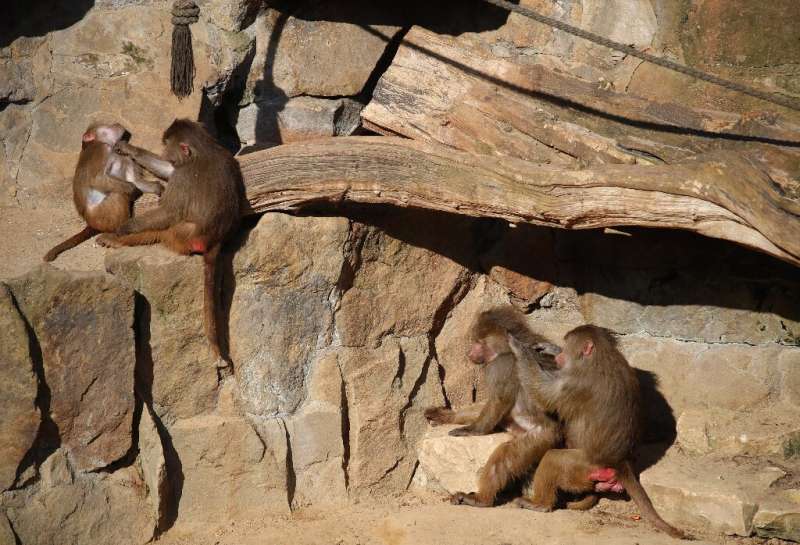It took the baboons about three days to establish a system for choosing the same image.
French researchers have observed non-human primates developing social conventions to work together to obtain a reward, in an experiment set up with a group of baboons.
About twenty baboons raised at a primatology centre were given the task in pairs of making the same choice when each presented with a set of two images on touch screens.
If both animals made the same choice, they were rewarded with a treat.
It took the baboons about three days to establish a system for choosing the same image, even when they could not see their partners' choices, says the report, published Monday in the journal Philosophical Transactions of the Royal Society B.
While previous research had shown that primates were capable of social conventions like grooming, this is the first to show a new behaviour appearing spontaneously in a group, without human intervention.
The experiment was conducted by French national research institute CNRS and Aix-Marseille University.
Over the course of tens of thousands of tests the baboons developed a hierarchy for the images presented, the researchers noted.
At first the baboons could see what was happening on other animals' screens, but in the second phase of the experiment that visual cue was taken away.
"The group's performance didn't budge," the study's main author, cognitive psychology researcher Anthony Formaux told AFP.
"It surprised us when they continued to choose the same image without being able to imitate each other."
Researchers ruled out the possibility of a simple shared affinity for certain colours by repeating the experiment with black and white designs.
According to the study, for a behaviour to be considered a social convention its benefit must apply to the whole group, it must work consistently, and it must be one among several solutions.
Gestures such as shaking hands, embracing or bowing are social conventions that help groups resolve problems, it says.
"Language is one big convention," said Formaux, "From the beginning, individuals had to agree on the meanings of words."
As to how the baboons managed to share their hierarchy with one another, that remains a mystery.
"We suppose that they agreed on it—but we don't know how," Formaux said.
More information: Anthony Formaux et al, The experimental emergence of convention in a non-human primate, Philosophical Transactions of the Royal Society B: Biological Sciences (2021). DOI: 10.1098/rstb.2020.0310
Journal information: Philosophical Transactions of the Royal Society B
© 2021 AFP
























